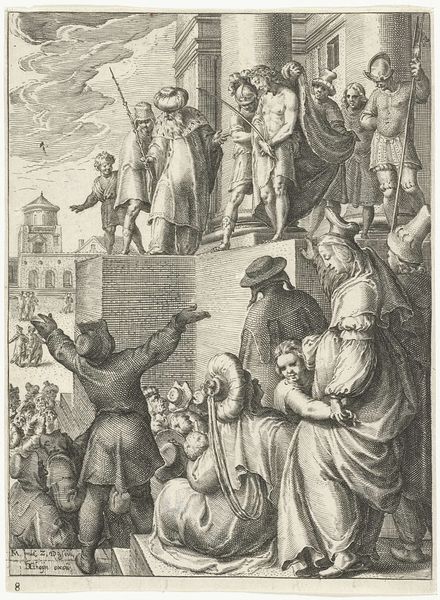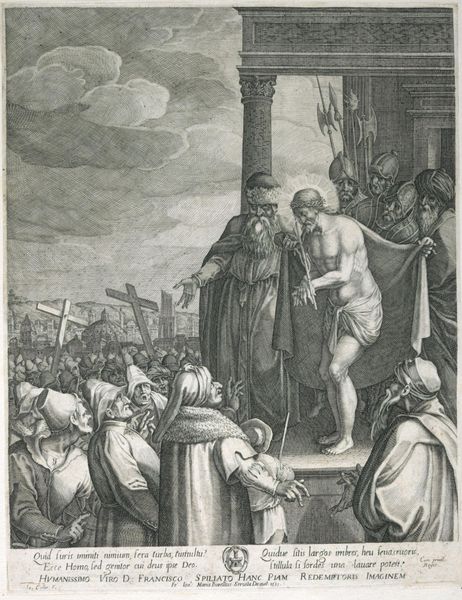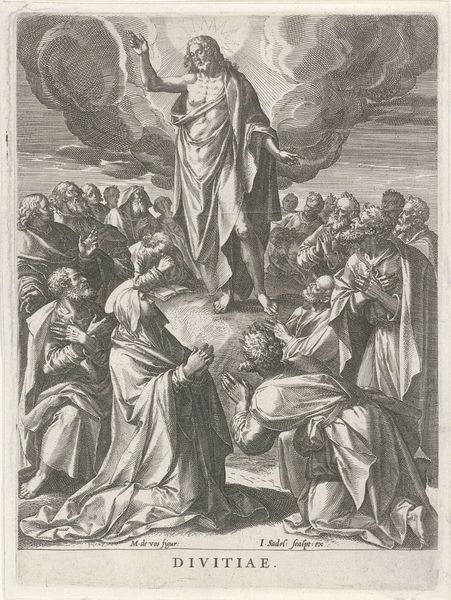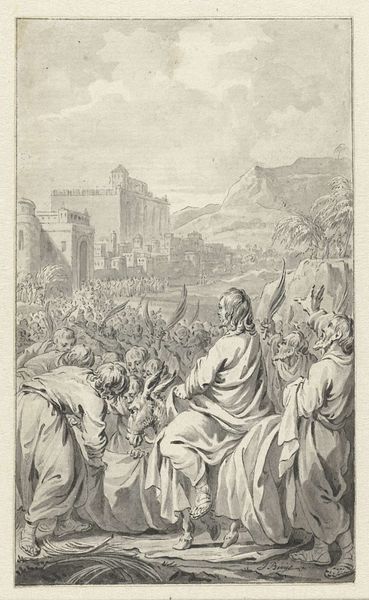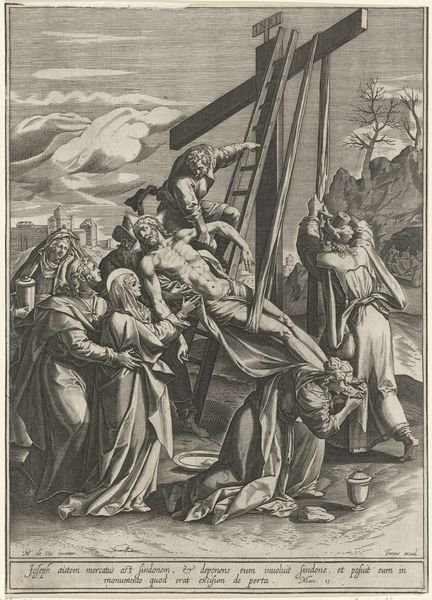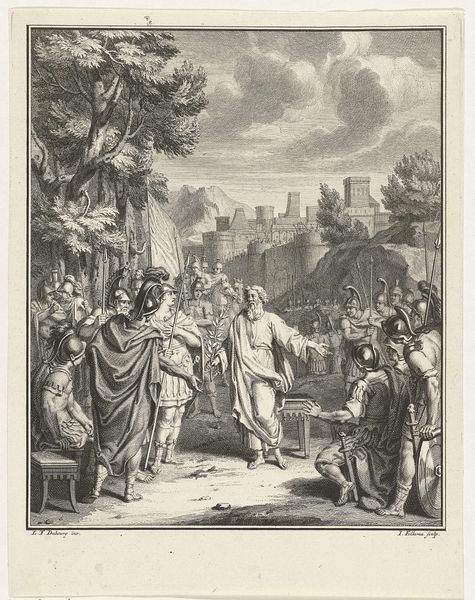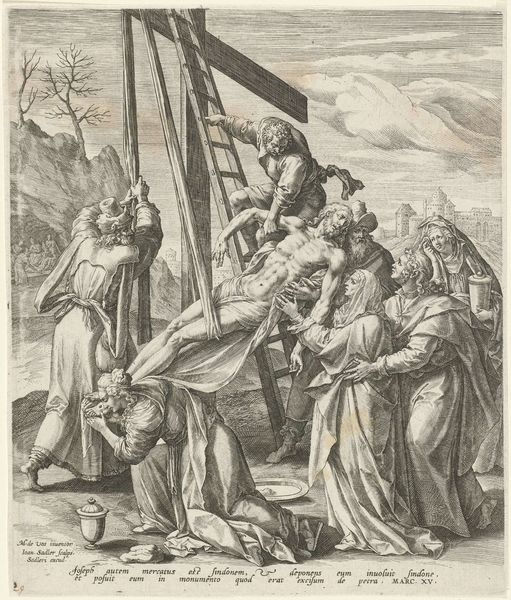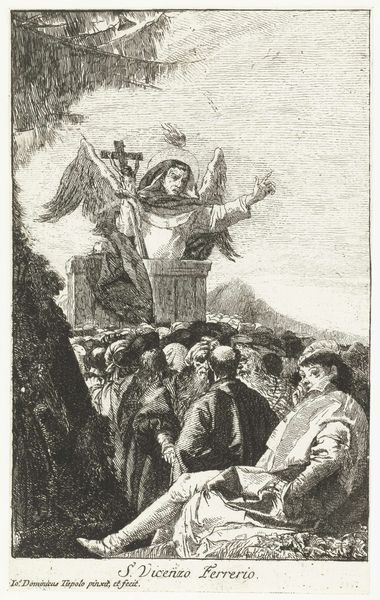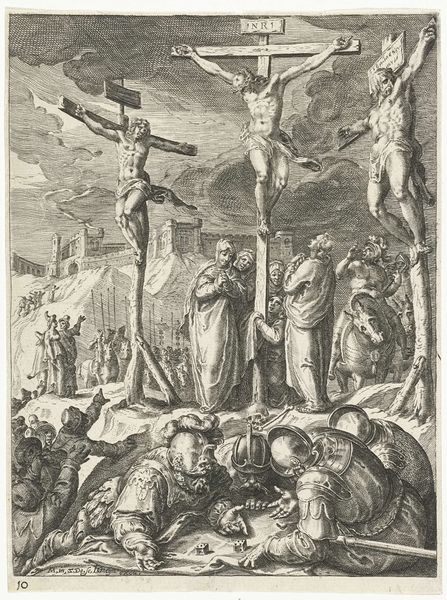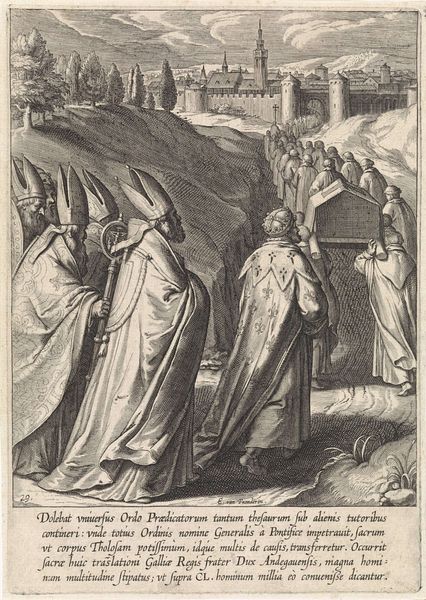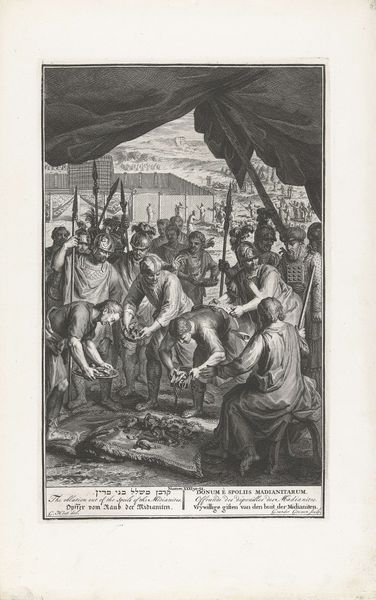
print, engraving
# print
#
landscape
#
figuration
#
11_renaissance
#
history-painting
#
northern-renaissance
#
engraving
#
christ
Dimensions: height 250 mm, width 206 mm
Copyright: Rijks Museum: Open Domain
Curator: This is a print made by Johann Sadeler I, dating back to 1581, entitled "Inwoners van Nazareth verdrijven Christus uit de stad," which translates to "The Inhabitants of Nazareth Driving Christ Out of the City." It is currently housed in the Rijksmuseum. Editor: The energy is palpable. The way the figures are packed together, almost spilling out of the frame on that rocky precipice, is really striking. There is a dynamism between the relatively still figures of Jesus and the approaching crowds on the left, and those that seem to convulse with rage as they stand on the cliff. It's a highly emotive piece, rendered in the precise and meticulous lines of an engraving. Curator: Indeed. Sadeler uses a somewhat elongated figure style here, characteristic of late Northern Renaissance engraving. Look at the sharp contrast created through the intricate hatching. Observe how the direction of the lines molds the forms and defines the contours, effectively building dramatic chiaroscuro despite the absence of color. It's this command of light and shadow that intensifies the emotional weight of the scene. Editor: It's fascinating to see how the cultural anxieties of the time find expression. Consider the portrayal of Christ as a serene, almost detached figure amidst the furious mob, perhaps a visualization of faith besieged. And beyond, that city sprawls—so seemingly placid against the roiling passion on the clifftop. The piece makes me consider the position of outsiders who challenge societal norms, especially within the framework of religious doctrine and political stability. Curator: Absolutely. The placement of the narrative within the grand scale of the city makes the small figures’ actions somehow even more consequential and, I would also suggest, historically meaningful. The details here construct a visual allegory, embodying complex power dynamics. Editor: It’s been an enlightening moment, allowing us both to analyze the composition's meticulous artifice while remaining keenly aware of its lasting reflections on humanity, power, and belief. Curator: Agreed, and an occasion to witness the visual power an artist has with line work and shadow.
Comments
No comments
Be the first to comment and join the conversation on the ultimate creative platform.

